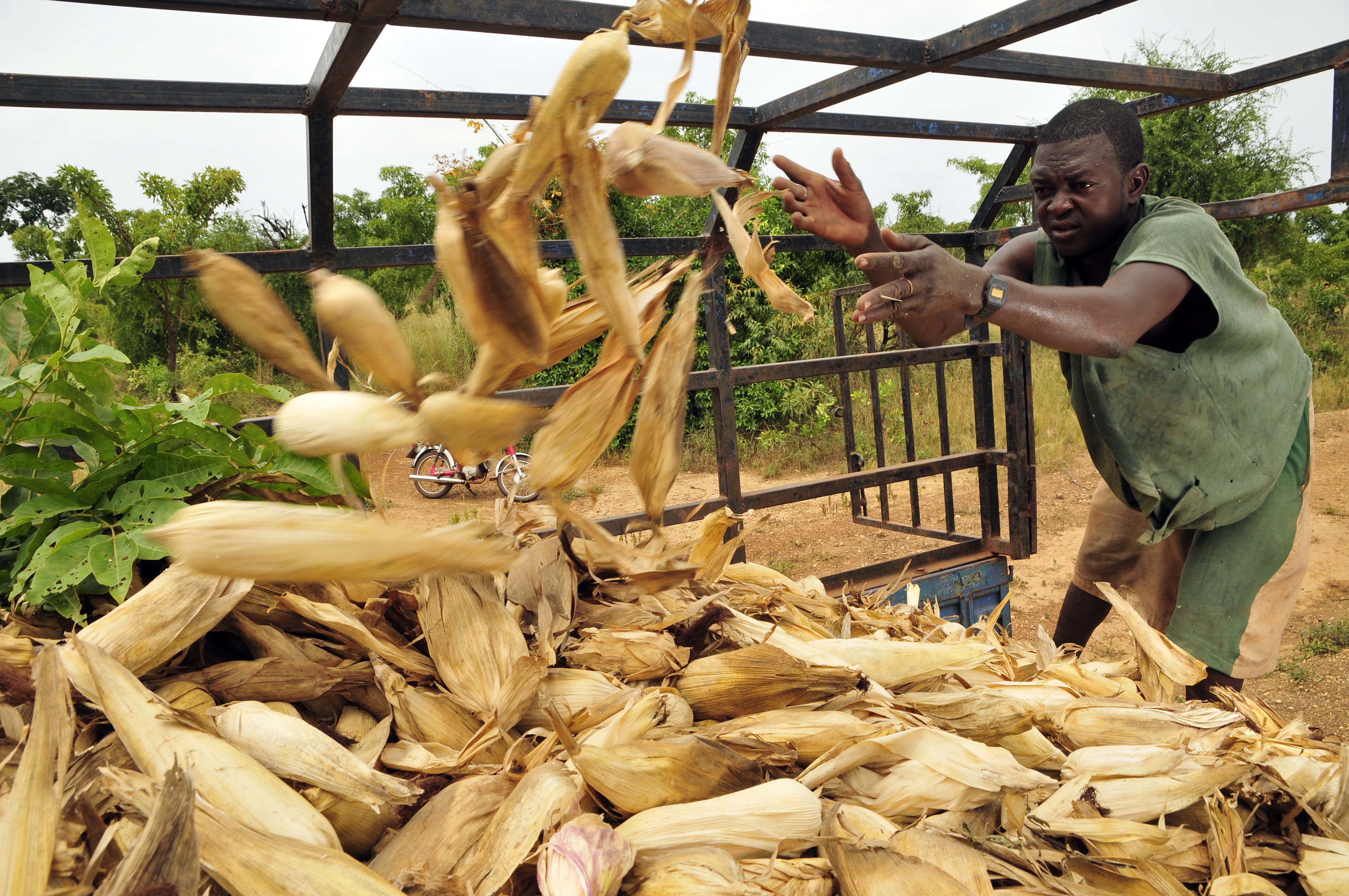Youth engagement with commercialisation hotspots in Ghana

Youth unemployment and underemployment are key development challenges facing many developing countries, especially in Africa. In working to address these challenges, there is a belief among policymakers and development practitioners that the rural economy – built around agriculture, but encompassing much more – will be able to provide income-earning opportunities for many millions of young people into the foreseeable future, thereby addressing the youth employment challenge in Africa.
The analysis that informs this view highlights one or more of the following: increased use of productivity enhancing technology (like seed varieties and fertilisers, and ICTs); engagement with national, regional and global value chains; development of, or engagement with, markets (including land rental markets); mechanisation; entrepreneurship; greater business orientation; increasing importance of processing and value addition; diversification; and finally, investment in research and infrastructure. The assumption is that rural areas, where such transformational processes take root, will provide more diverse and better-remunerated on-farm and off-farm employment opportunities for young people. But, to date there has been little research that looks specifically at how rural young people in Africa engage with, or are affected by, two processes closely associated with transformation – agricultural intensification and agricultural commercialisation.
Research
In recent research in the Techiman area, Brong Ahafo Region, Ghana, we examined the pathways with which particular groups of young people seeks to construct livelihoods in the context of agricultural commercialisation, and the outcomes associated with these efforts. In analysing the pathways and outcomes, we identified four possible modes of engagement within commercialisation hotspots: (1) on-farm production, (2) on-farm wage labour, (3) off-farm-wage labour, and (4) business operation. Within each of these modes of engagement there are many possible activities: on-farm production might entail production of cereal crops, horticultural crops or purely commercial crops like cocoa, cashew or tobacco; while off-farm wage labour might entail working in a hairdressing salon, as an assistant in a shop or canteen, or in housing construction. Between and within these different modes of engagement, there are different resource, knowledge and social barriers to entry, and it is these differences that have important implications for those who are able to take advantage of particular opportunities.
For instance, our research revealed that many rural young people will prefer to be somewhere else or at some point dreamt of doing something else. However, even if they would rather be somewhere else and/or doing something else, for most of these young people, commercialised rural economies do offer a range of income-generating activities, both on-farm and off-farm wage employment, as well as business operations. Support from social networks is key in enabling rural young people to start their diverse income-generating activities; while their activities had little barrier to entry, many reported receiving financial assistance and the lending of a piece of land from their fathers, mothers or siblings to begin their work. Although many of the activities engaged in by the youth are largely small-scale in nature, there is evidence of asset accumulation in the form of residential plots, housing (and other buildings), farmland, motorcycles and motor-tricycles. Interviewees proudly reported investing in their children’s education, as well as their own development (e.g. undergoing training to become a hairdresser or mechanic). Accumulation of these assets reflects the combination of a relatively dynamic rural economy, enabling social relations, plus hard work.
However, what is worrying about the situation of these rural young people is that their assets, and the economic activities that generated them, remain vulnerable to hazards and can be quickly lost; our interviewees identified a number of such constraints or hazards affecting their activities. These hazards can be categorised into two: personal, health-related hazards on one hand; and business-related hazards on the other. The interviewees told of health-related hazards, including accidents, theft, on-the-job injuries, sickness, and family tragedy. The business-related hazards reported includes biophysical conditions (prolonged drought and unreliable rainfall), low demand for produce or services, bad luck, confiscation of motor-tricycles by police due to failure to produce a license, occasional non-payment of daily wage by employers, employers closing down, and loss of savings due to collapse of a micro-finance institution and business failure. Whether working on-farm or off-farm wage work, as a producer or in business operations, hazards such as these are part of daily life, and may necessitate the liquidation of hard-won assets.
Overall what this research tells us is that whether or not a young person wants to be there, being in an area of intensive agricultural commercialisation compared to one with limited commercialisation is probably as good as it gets. However the constraints and hazards experienced by these youth in efforts to build their livelihoods deserve policy attention
Recommendations
There is, for example, a clear opportunity to use policy and programmes to help protect young people’s accumulated gains from hazards in the rural environment. In the first instance, such policies should include informing and motivating young people, so that they take full advantage of existing social protection programmes. In Ghana, an obvious example would be the National Health Insurance scheme. There may also be opportunities to use programmes to make it less likely that key assets would need to be liquidated in order to meet unexpected or emergency expenses.
Written by: Thomas Yeboah
Photo credit: Neil Palmer – CIAT
Brief: bit.ly/2u6utC0
Working paper: bit.ly/2Hi21py
